Is Bologna Worth Visiting? 9 Honest Reasons You’ll Love (or Hate) It

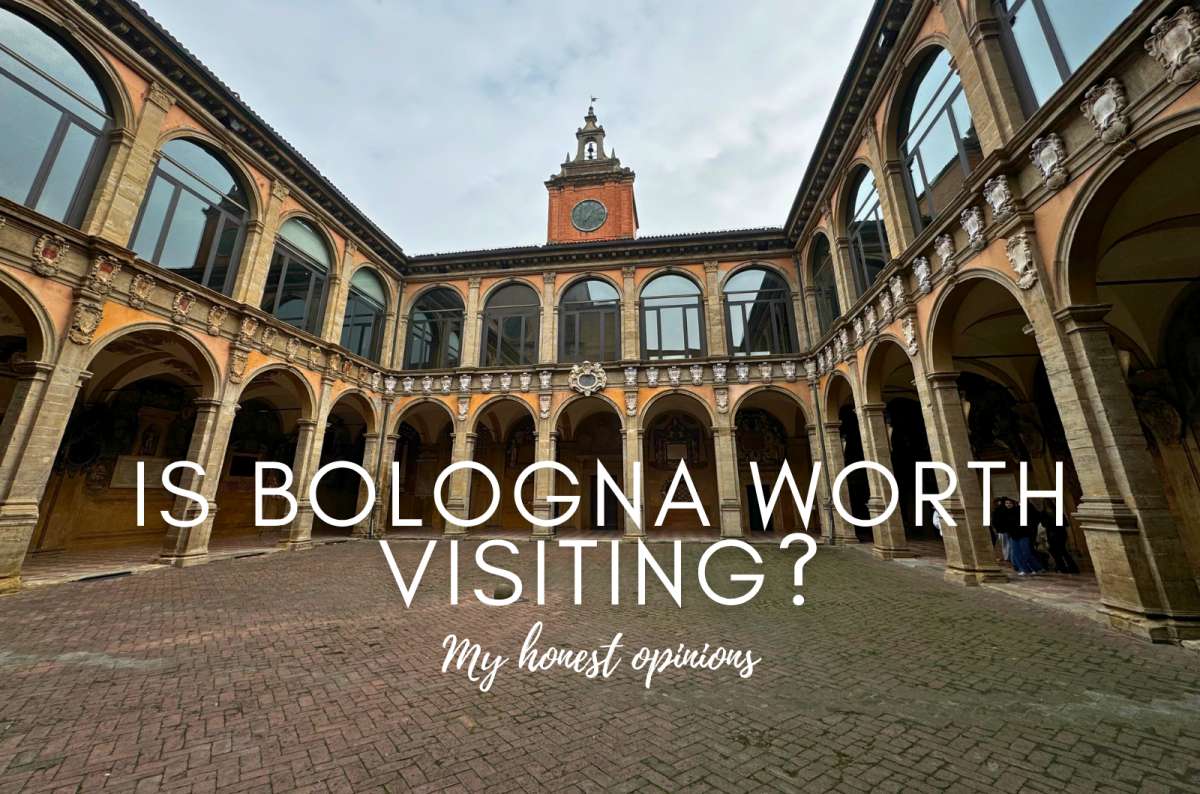
Is Bologna worth visiting? Yes, but don’t come expecting non-stop beauty like you would in Florence or Venice. I’ve been a couple of times, including once as part of an extensive tour of the Emilia-Romagna region, and that repeat visit helped me understand Bologna.
Bologna is easily accessible via Bologna Guglielmo Marconi Airport, which offers direct flights from major European hubs, making it a convenient destination for international travelers.
The best I can describe it is that Bologna’s value isn’t in one big “wow” moment but in how it works as a whole—the calm walks under the porticoes, the way Italians go about their lives there, and how every meal feels unpretentious but perfect. Bologna deserves to be included in any Italian itinerary for its unique blend of culture, food, and authentic atmosphere.
Because if there’s one thing Bologna, Italy is famous for, it’s food—first, last, always. But there are also the red rooftops, and the iconic Asinelli Tower and Garisenda Tower, Bologna’s famous leaning medieval towers that are symbols of the city.
It’s interesting enough for a history buff like me, but obscure enough to be one of Italy’s genuinely local and less touristy cities.
If you’re thinking about visiting Bologna, remember it’s a bit rough around the edges—but hey, this is real Italy, and that’s how it’s supposed to be.
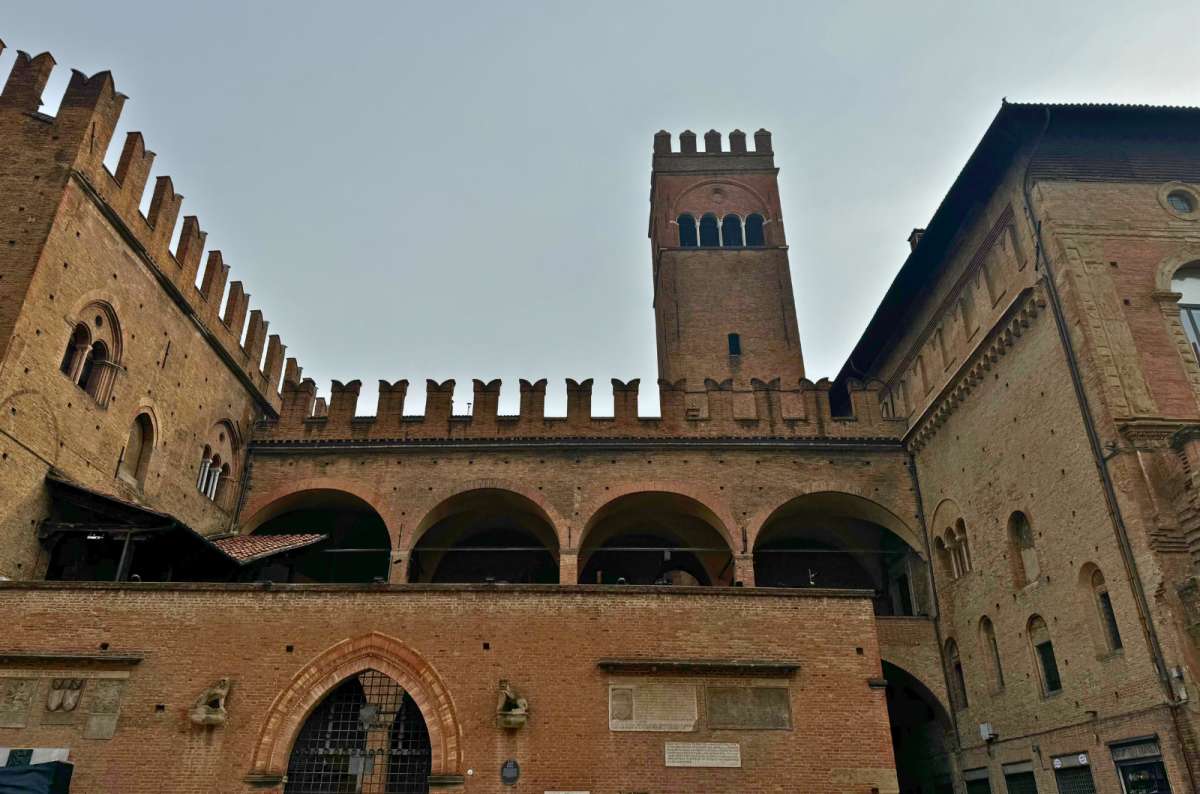
Palazzo Re Enzo—Bologna’s medieval charm still standing strong
Quick rankings from my Bologna visit
- Value for money: 9/10
- History and architecture: 7/10
- Things to do in a day: 7/10
- Infrastructure and parking: 6/10
- Food and café scene: 10/10
- Overall experience: 80 %
Who will enjoy Bologna
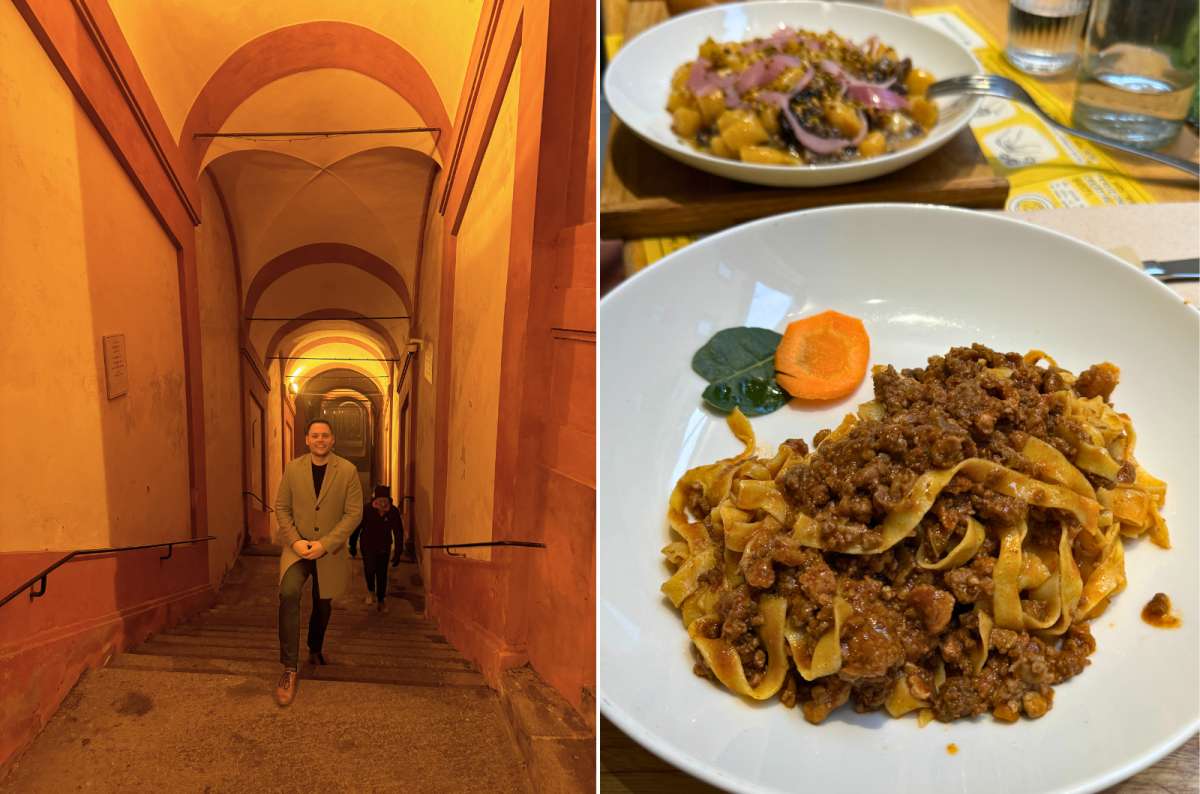
What is Bologna, Italy, famous for? Porticoes, pasta, and that irresistible local vibe
- Food-obsessed travelers who plan trips around meals
- Walkers who like exploring on foot under endless porticoes
- People who prefer a local vibe over famous landmarks
- Repeat visitors to Italy who’ve done the classics
- Fans of university towns who enjoy a lively student atmosphere and youthful energy.
- Budget-conscious travelers who still want great quality
Who should skip Bologna
- First-time visitors to Italy chasing “wow” sights
- Museum enthusiasts—it’s not that kind of city; those looking for world-class Renaissance art should look to Florence instead.
- Nightlife-focused travelers expect big nights out.
- Anyone sensitive to bad air quality

What is Bologna, Italy like?
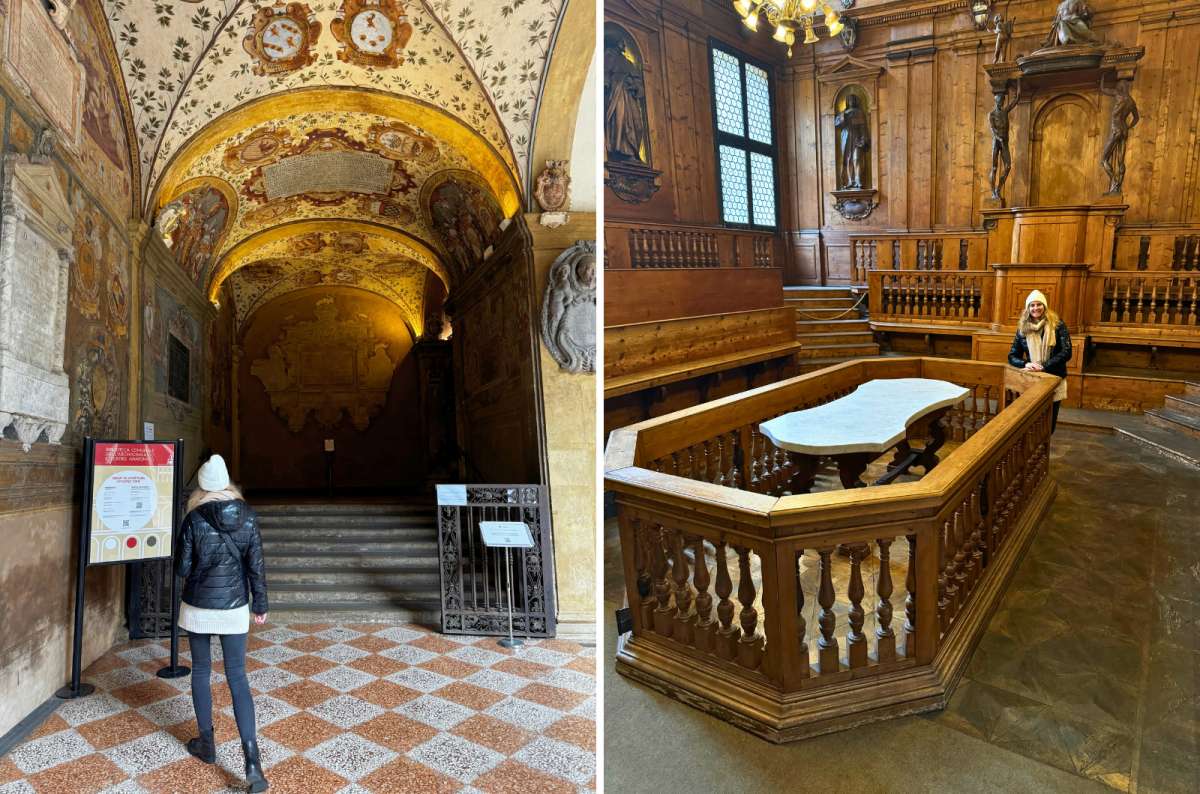
Inside the Archiginnasio—the smartest place in Bologna la Dotta (and maybe the prettiest too)
If you want to know what Bologna, Italy, is like, I’d describe it as local, imperfect, solidly interesting, and built for eating well. The city's walkability and famous porticoes create a welcoming atmosphere that invites you to explore its vibrant streets.
Italians call it Bologna la Dotta, la Rossa e la Grassa—the learned one, the red one, and the fat one. That pretty much sums it up. It’s smart because of the university (oldest in the world!), red because of the rooftops (and politics), and fat because… well, you’ll see once you eat here. Bring stretchy pants.
Sometimes, all you need to do is take the first step... I've filtered out the best hotels in Bologna for you
Save it for yourself to come back to later, or share with your friends on social media!
I've already planned your ititnerary for the trip, complete with my travel tips.
Why go to Bologna?

Proof that historic architecture also makes it worth visiting Bologna
So, why go to Bologna, Italy, when you could visit cities that look better in photos? Is Bologna a nice place to visit ? Not in the classic sense. Bologna feels very Italian, and even though it has its grittier moments, it’s still super delicious—I’ve yet to meet anyone who doesn’t love Italian food.
Compared to other Italian cities, Bologna stands out for its authentic atmosphere, relaxed vibe, and local food culture, making it a less touristy and more genuine alternative to places like Florence or Venice.
The porticoes are Bologna’s architectural claim to fame. They go on for literal kilometers, which was funny to me at first, but the longer I walked, the more impressed I got, no matter how absurd it seemed. Not to mention them being great for shade or rain.
And the food, obviously.

One bite of this and you’ll stop asking if Bologna is worth visiting
What is Bologna famous for?
Bologna is famous for:
-
Food: Tagliatelle al ragù, mortadella, tortellini in brodo. Everything they cook here is SO GOOD.
-
Porticoes: 40 km (25 mi) of covered walkways, now UNESCO-listed. You’ll end up walking under them all day without even realizing it.
-
The Two Towers: Slightly dangerous-looking medieval towers, including Bologna’s famous leaning tower, which leans even more than the one in Pisa. Currently off-limits due to structural issues (that feeling when you lean too much for your own good).
-
The world’s oldest university: Established in 1088. You will notice instantly how the student population in Bologna affects the city’s energy.
-
Basilica di San Petronio: Massive, half-finished church that’s free to enter. It was once meant to outshine St. Peter’s in Rome until the Pope shut that plan down.
-
Local life: Come and feel the vibes over an espresso, at the markets, and maybe even over a conversation with a local.

Basilica di San Luca—one of the reasons Bologna is famous for more than just pasta
This is a city that doesn’t need attention—it’s confident doing its own thing.

Is Bologna worth visiting if I’m not into food?
Honestly? Probably not.
Bologna is food. The tagliatelle, the mortadella, the tortellini—they’re not “something to do,” they are the experience.
You could argue that there are leaning towers, churches, and the longest portico in the world, but none of them are life-changing on their own. The museums are modest, and there’s no single must-see landmark that’ll make your jaw drop. If Florence is about art and Venice is about canals and drama, Bologna is about what you’re having for lunch.
If you don’t care about food, you’ll walk around thinking, “Okay, nice buildings... now what?”
Verdict: Bologna is worth visiting if you want to eat, walk, eat some more, and feel like part of local life for a few hours (or days). If you’re after visual wonder, head to Florence or San Marino.
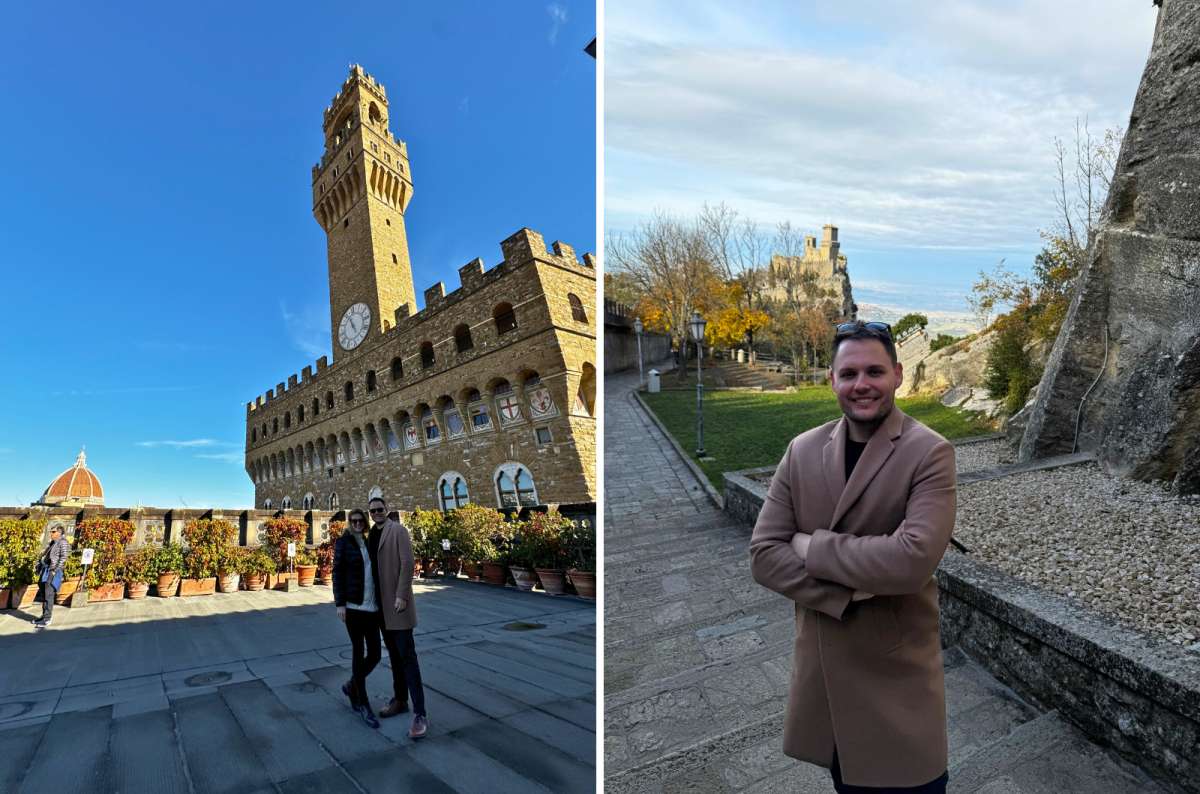
For art and architecture, go to Florence (left photo)—for views for days, San Marino’s your stop (right photo)
What to do in Bologna: My top 10
Bologna is compact, so you can walk everywhere and see everything in a full day, maybe stretch it out to two if you want to spend half your time eating (and then digesting).
Here’s what I thought was worth my time during my Bologna trips:
-
Portico of San Luca – 666 arches, 3.5 km (2 miles) long, ending at the Sanctuary of the Madonna di San Luca, which sits on a hill with a killer view of the city.
-
Piazza Maggiore & Basilica di San Petronio: The heart of Bologna. I didn’t find it pretty, but it’s got presence—massive, brown buildings all around and a real sense of age. San Petronio dominates the square, half-finished and free to enter. Imperfect, but that’s what makes it interesting.
-
The Two Towers – Classic photo stop. They are currently fenced off because one might actually fall. I always stop to look up, wonder how they’re still standing, and then go find pasta.
-
Anatomical Theater of the Archiginnasio – A wood-paneled room where students once learned medicine by cutting up real bodies. The carved “skinned men” statues are both art and nightmare fuel. It’s morbid, smart, and pure Bologna weirdness—I loved it.
-
Palazzo Poggi Museum – Another dose of Bologna weirdness. Anatomy models, deformed fetuses, and military fortresses all in one place. I couldn’t look away.
-
Pinacoteca Nazionale di Bologna (National Art Gallery): A solid art stop. It’s got serious medieval and Renaissance stuff—Giotto, Guido Reni, and Lavinia Fontana, who honestly steals the show. I liked it.
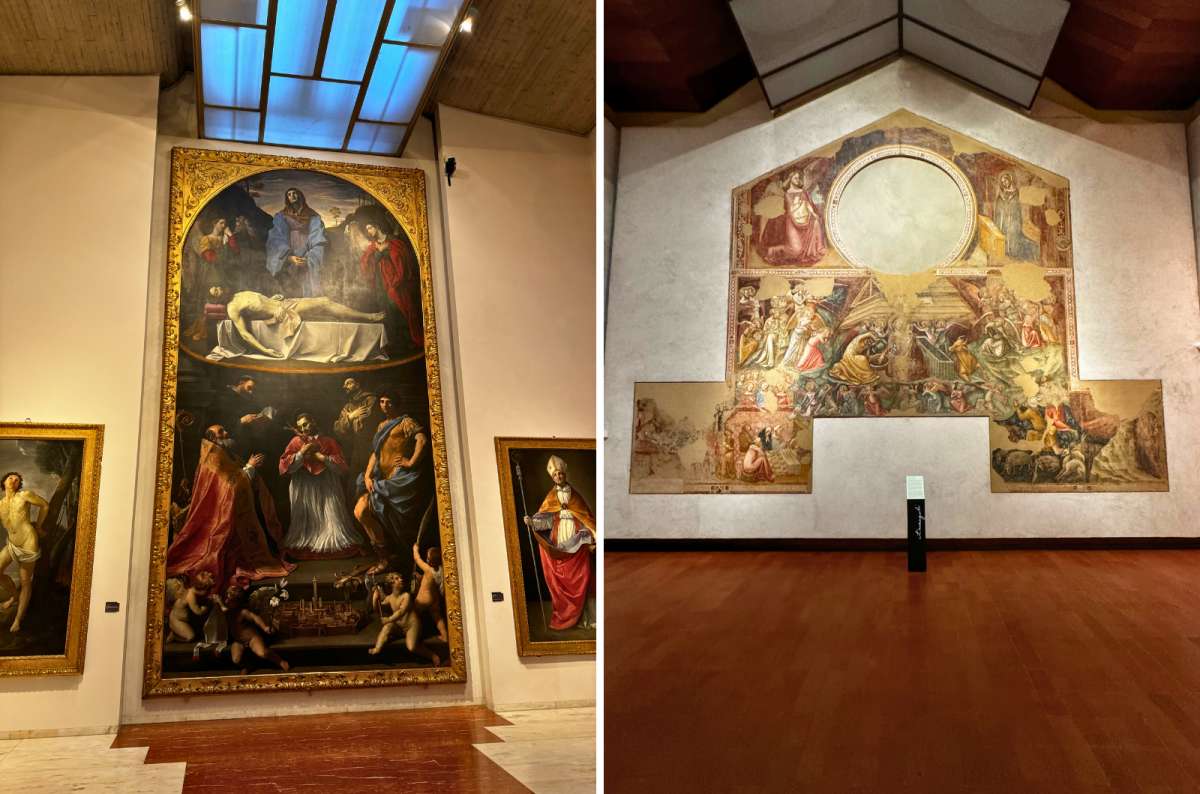
Take your time here—Bologna’s art deserves it (Pinacoteca Nazionale di Bologna)
- Basilica di Santo Stefano – Four old churches in one moody complex. I wandered around for almost an hour just taking it in. A nice, quiet spot.
- Join a food tour led by a knowledgeable local guide to explore Bologna’s markets, meet artisans, and discover authentic flavors that you wouldn’t think to try on your own. Pro tip: Take a pasta-making class for a hands-on experience with traditional techniques—often taught by a local nonna!
- Sfoglia Rina – No Bologna trip is complete without pasta from Sfoglia Rina. It’s small, simple, and always busy for a reason. I had the rabbit tortelli and tagliatelle al ragù—both were epic, no exaggeration!

Top reasons to visit Bologna: My honest opinion
Bologna doesn’t beg to be loved—but if you get it, you really get it. The city is renowned for its good food, making it a paradise for food lovers who want to experience authentic Italian cuisine. But that’s not all.
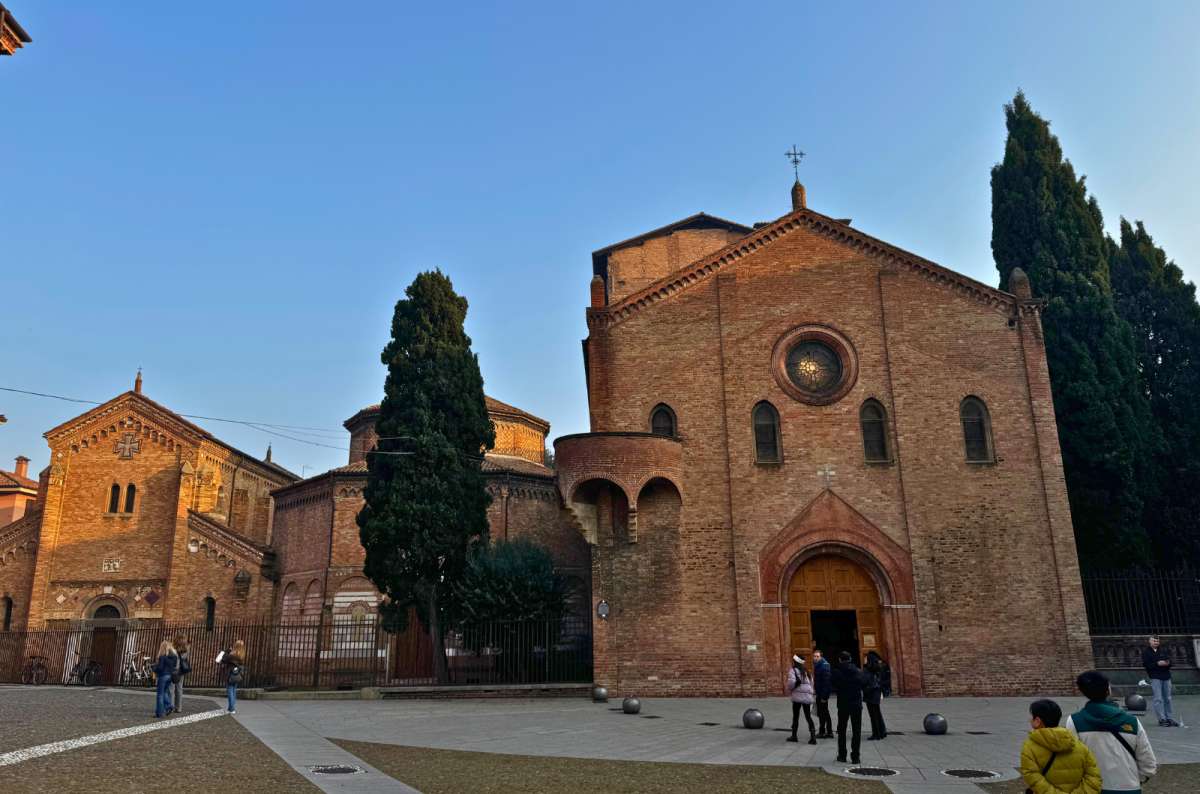
Basilica di Santo Stefano
Here’s why I think it’s one of the best cities to visit in Emilia Romagna:
Reason #1: Bologna is worth it just for the food
Food truly is the main reason Bologna is worth visiting; there’s no way around it. I found the pasta, ragù, and mortadella better than anywhere else. My favorite meal was at Sfoglia Rina. Eating in Bologna feels like a full-time job, but you’ll gladly quit your real one to make room for more!
Reason #2: It’s local and not overrun by tourists
Bologna is one of the few popular Italian cities that still feels mainly local. I heard Italian everywhere, saw people working, running errands, and talking with their hands a whole lot, not just posing for photos.
Reason #3: You can walk everywhere
The historic center of Bologna is compact, flat, and easy to navigate. The porticoes give you shade in summer, cover in rain, and are a built-in excuse to keep walking. You won’t need public transport unless you’re extremely lazy.
Reason #4: The porticoes are worth the hype
I didn’t expect to care about a bunch of covered walkways, but Bologna’s porticoes really are something else. They go on forever—kilometers of arches wrapping around the city like it’s all one big hallway. The Portico di San Luca is the famous one with 666 arches up into the hills, but even the most ordinary street looks special under those arches.

The historic heart of Bologna, around Piazza Maggiore and the Fountain of Neptune
Reason #5: You get real history without the burnout
Bologna feels old in the best way. You see the history everywhere with medieval towers, faded frescoes, and the university that basically invented higher education. The best part is that you can take it all in without getting museum fatigue (*cough* Florence *cough*).
Reason #6: The student energy keeps Bologna alive
Bologna has the kind of buzz that comes from 80,000 students just... existing. Cafés are full but never chaotic, bars hum until late, and it all feels casual. The city feels young without trying, which is more than I can say for most of northern Italy.
Reason #7: It’s still affordable (for now)
I ate well in Bologna without checking my bank account after every meal. Dinner prices don’t feel like punishment, and hotels don’t pretend they’re luxury just because they’re near a piazza (try Mercure Bologna Centro for great value). It’s what Italy should cost.
Reason #8: It’s perfectly placed for day trips
Bologna sits right in the middle of Emilia-Romagna, so you can reach Modena, Parma, Ravenna, or even San Marino in 1 – 2 hours—I’ve done them all myself. Each one adds something Bologna doesn’t. If you’re touring the whole region, though, base yourself in Modena. I explain why in my 7-day Emilia-Romagna itinerary.
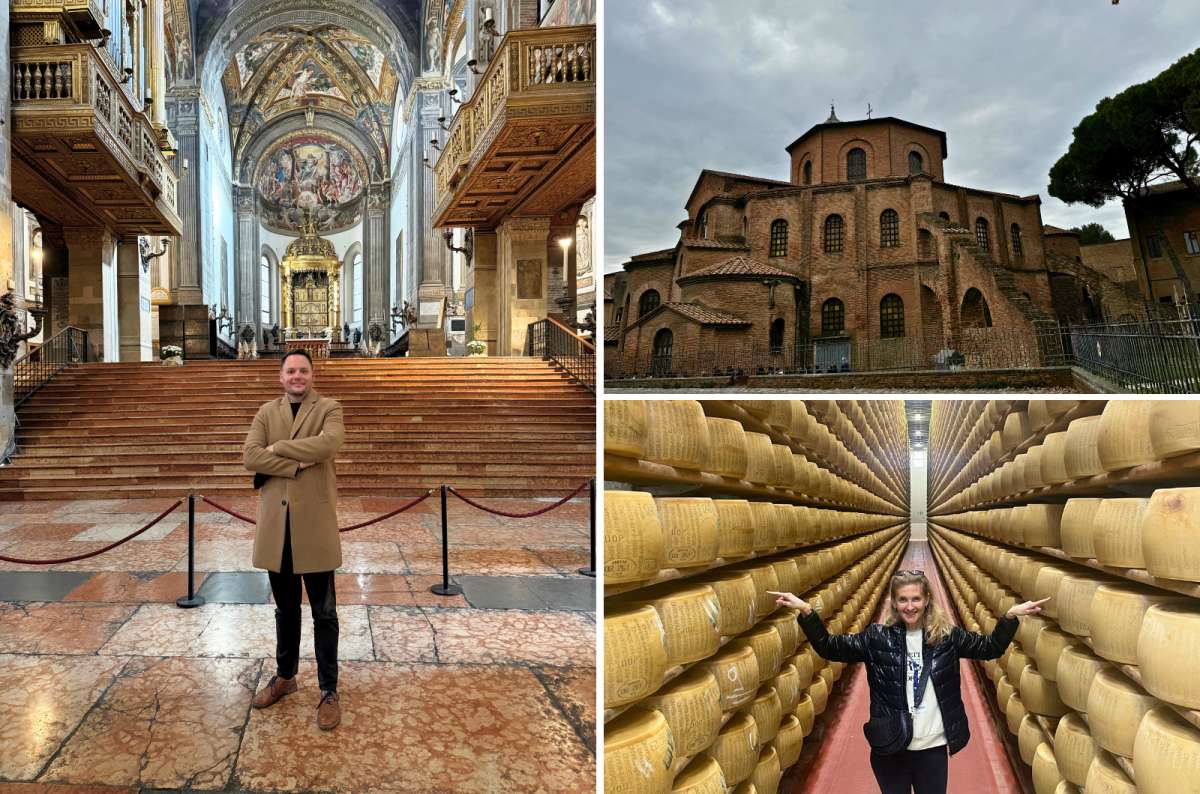
From Ravenna’s dazzling Basilica di San Vitale to Parma’s Duomo and Modena’s 4 Madonna cheese cellars—these day trips from Bologna prove you don’t have to go far to see some seriously unforgettable sights.
Reason #9: It feels real
What I liked most about Bologna is that it doesn’t try to impress you. The walls are tagged, the porticos are chipped, and people actually live their lives here. You hear students in discussions, locals yelling across the street, and someone dragging a chair outside for a smoke. It’s not curated, and it feels great if you can appreciate it.
Reasons Bologna might disappoint you
Let’s be honest, though, Bologna isn’t for everyone. Compared to other cities I’ve visited in Italy, where the integration of different historical periods and unique architectural history often creates an immediate sense of awe, Bologna felt less striking at first glance.
Reason #1: It doesn’t have a “wow” factor
Let’s be honest—Bologna isn’t a show-off. There’s no single moment where your jaw drops like in Florence or Venice. The towers lean, but not super dramatically; the churches are big, but not breathtaking. Let’s say it takes time to appreciate. I didn’t fall for it instantly—it grew on me after a couple of visits.
Reason #2: Grimy corners you can’t unsee
Yeah, I know—I called this a pro earlier. And it is, depending on your mood. Bologna’s not polished in the slightest. You’ll see graffiti, trash piles, and paint peeling off centuries-old walls. Some corners look like they haven’t been cleaned since Mussolini. You can see it as character if you’re into grit, but it’s an eyesore if you’re not.
Reason #3: The air quality is bad
Bologna’s air can get nasty. The city sits in the Po Valley, one of Europe’s most polluted regions, where smog tends to sit and stew. The air has nearly twice as much fine pollution as what the World Health Organization says is safe. You can tell, especially in summer, when traffic and heat join forces. If you’re sensitive, take note.
Reason #4: The museums are small and weird
Bologna’s museums are niche, sometimes creepy, and a bit random. I kind of liked that, but you won’t spend hours in them, and unless you’re after something very unique, you’ll probably skip them altogether.

Sanctuary of the Madonna di San Luca, glowing beautifully at night above Bologna.
Cooking and culinary experiences in Bologna
You’ve probably caught on by now that if you’re the kind of traveler who plans your day around your next meal, Bologna is your dream come true. It is obsessed with food—and honestly, so am I when I’m there.
Bologna’s city center is a maze of trattorias, delis, and food shops, all serving up the kind of local cuisine that makes you want to cancel your ticket home.
If you want to really get a good grasp of Bologna’s food culture, join a Bologna food tour. These tours usually start in the historic center, sometimes just steps from the train station, and wind their way through the city’s famous porticoes. You’ll stop at local markets like Mercato delle Erbe, sample fresh pasta made right in front of you, and taste everything from prosciutto di Parma to aged balsamic vinegar. If you’re a fan of Parmigiano Reggiano, cured meats, or just incredible food in general, you’ll be in heaven.
Then there’s one activity I didn’t do, but I’ll mention. Taking a cooking class in Bologna. They’ll teach you how to roll out silky tagliatelle or tell you the real secret behind spaghetti bolognese (hint: it’s not what you think!). For the right type of visitor, it could be a fun, hands-on way to connect with the city’s food scene.
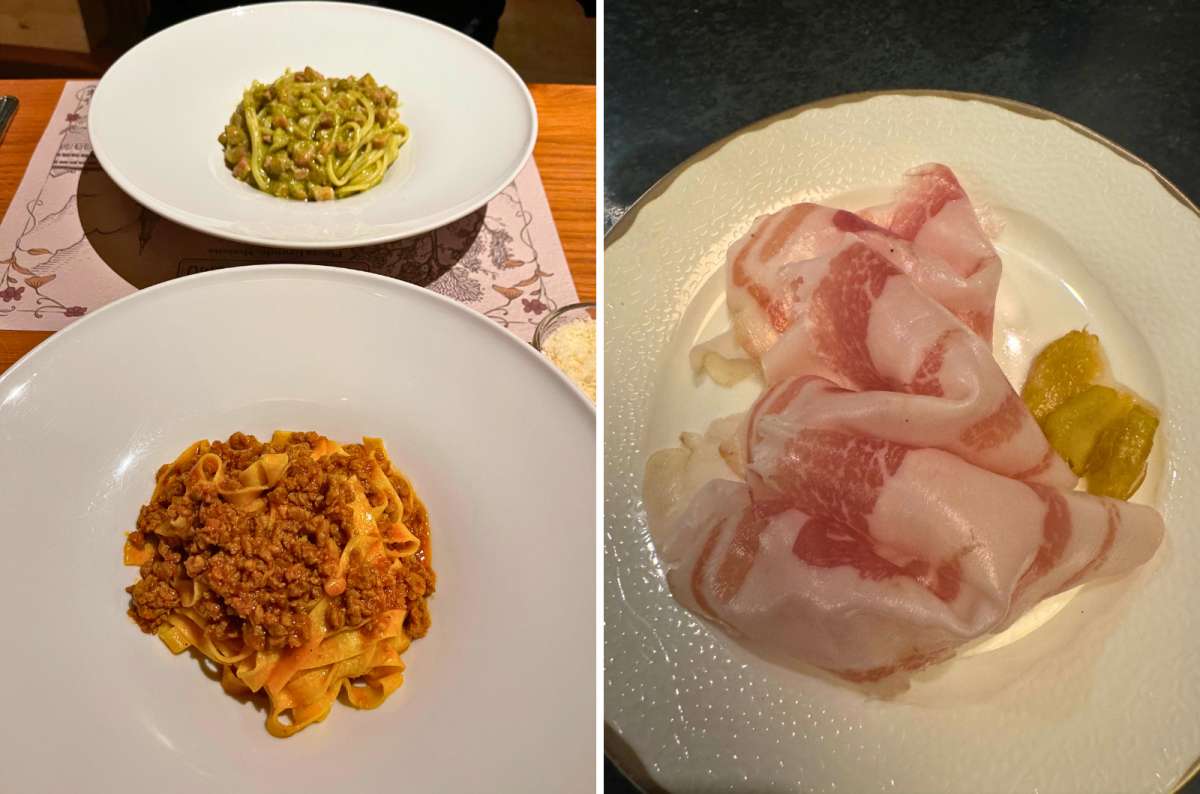
Taste your way through Bologna—fresh pasta, cured meats, and pure food heaven.
When to visit Bologna
Spring and fall are the best times to visit Bologna.
May or September are ideal if you still want warm weather without the crowds.
But honestly, I loved visiting in November—can you say truffles? Truffle season is from late October to December, with white truffle fairs around Bologna and nearby towns like Savigno. Just expect gray skies and early sunsets.
I’d skip summer. It’s hot, humid, and the bad air is more noticeable.
How many days do you need in Bologna
- 1 day = enough to see the main sights, eat well, and get the feel.
- 2 days = adds time for slower meals, maybe a food tour or San Luca walk.
- 3 days = too long. You’ll need day trips, or you’ll start circling the same porticoes.
Bologna isn’t big, and it’s easy to cover fast. I’ve been twice, and both times a single full day felt right. Spend your extra time in Modena, Parma, or Ravenna. I also highly recommend San Marino, the country within a country:

Is Bologna worth it for a short visit?
Yes, one full day in Bologna is enough to see the main sights and eat properly. I’ve done it in a day myself, and it really works just fine as a day trip. Bologna is compact, walkable, and efficient, perfect as a stop on your Emilia Romagna itinerary. You really don’t need any more time. Focus on the food, the porticoes, and Piazza Maggiore with the Basilica di San Petronio.
Day trips from Bologna are worth doing.
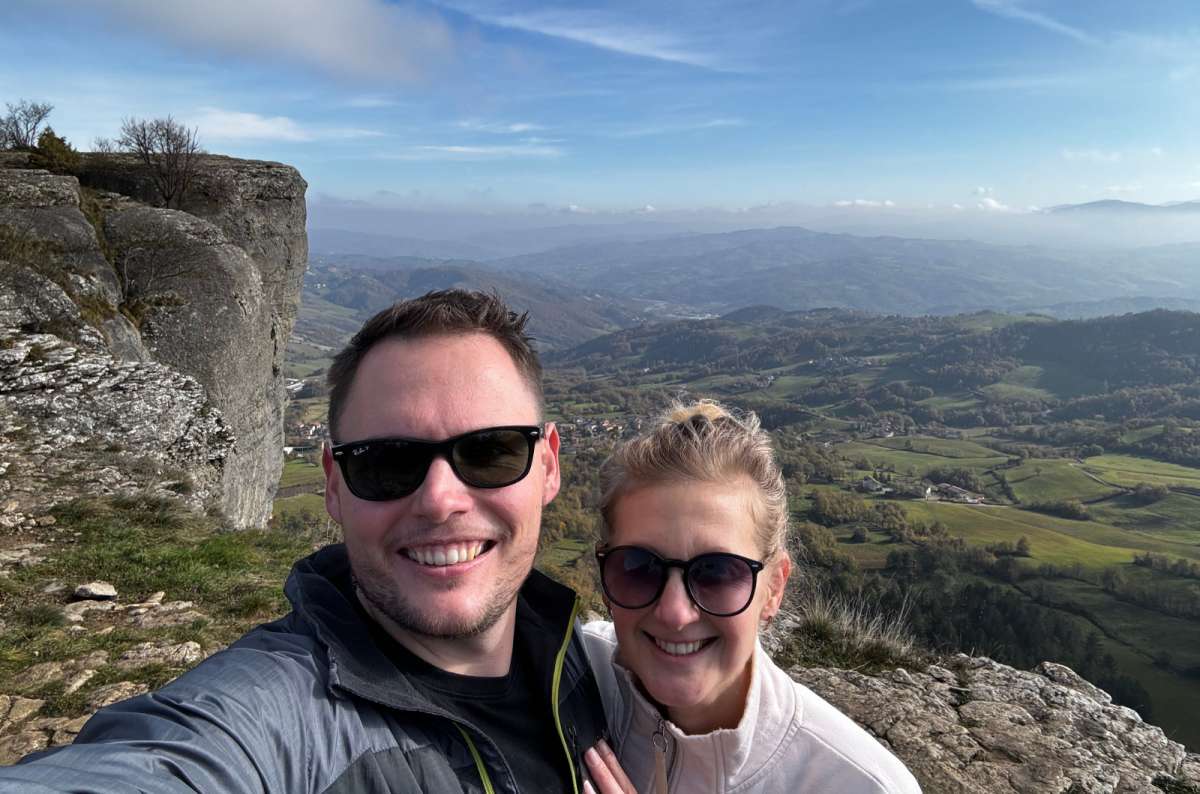
Exploring Rocca di Bismantova near Modena—an easy and scenic day trip from Bologna
I wouldn’t use Bologna as a base for the Emilia Romagna region—Modena is better for that in my experience—but if you, for some reason, want to (or have to?? Stuck in Bologna, eh?), there are plenty of easy places to visit from Bologna. Here are my favorites:
- Modena. Distance from Bologna: 45 km (30 min by car, 25 min by train). Smaller, cleaner, easier to park in, food’s still world-class, more Ferraris. I like it so much, I recommend basing yourself in Modena for the whole region. Here’s my 7-day Emilia-Romagna itinerary if you want proof.
- Parma. Distance from Bologna: 100 km (1 hr by car, 1 hr 10 min by train). Rich, elegant, Prosciutto and Parmesan both come from here.
- Ravenna. Distance from Bologna: 85 km (1 hr 15 min by car, 1 hr 10 min by train). The Byzantine mosaics are some of the most stunning in Italy.
- San Marino. Distance from Bologna: 140 km (1 hr 45 min by car). Tiny country, massive views. Very much worth a visit.
Final verdict: Is Bologna worth visiting?
Yeah, it is. Bologna is la Dotta, la Rossa e la Grassa in every sense—smart, red, and well-fed. It’s not the kind of city that blows your mind in one photo; the charm sneaks up on you instead of hitting you over the head. You’ll have plenty of time to mull over this question when you’re eating the best truffle pasta you’ve ever tasted. Be sure to take some time to people-watch in the piazzas or under the porticoes for a true Bologna experience.
Sometimes, all you need to do is take the first step... I've filtered out the best hotels in Bologna for you
Save it for yourself to come back to later, or share with your friends on social media!
I've already planned your ititnerary for the trip, complete with my travel tips.
This post contains affiliate links. If you make a booking through one of my links, I may earn a small commission—at no additional cost to you. Thank you for your support!




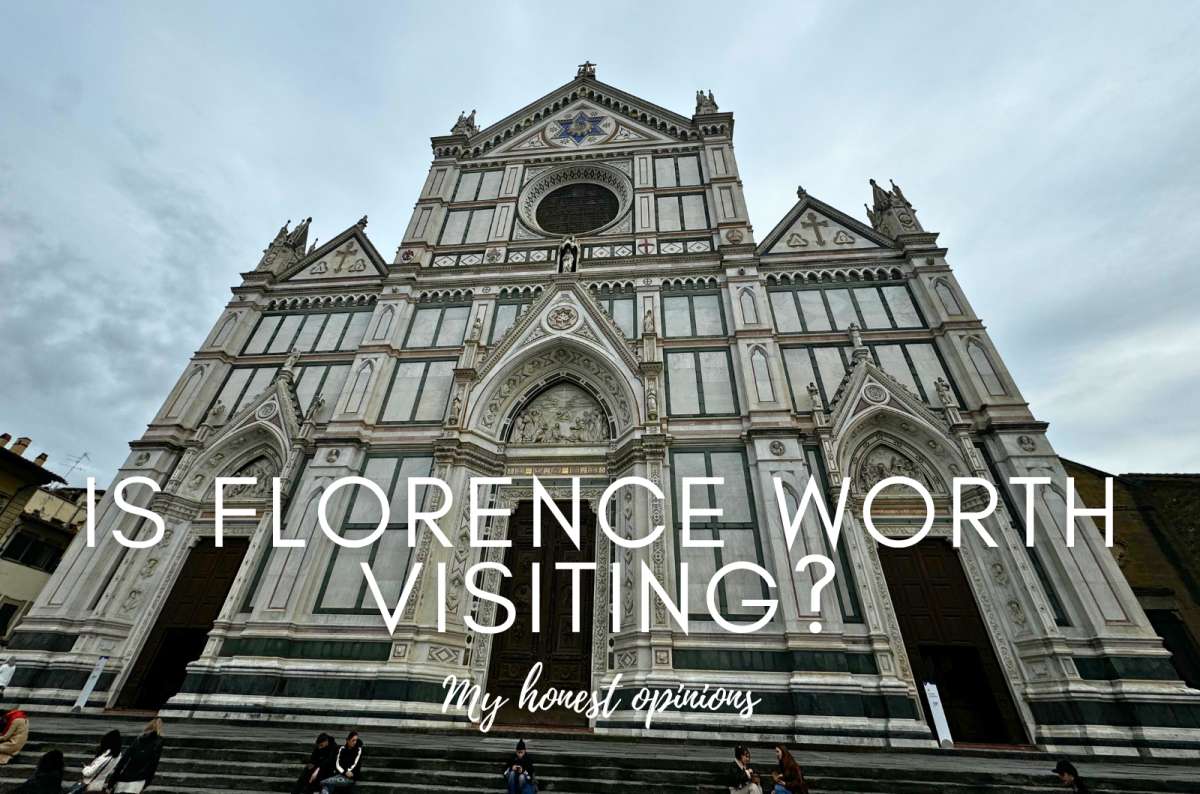
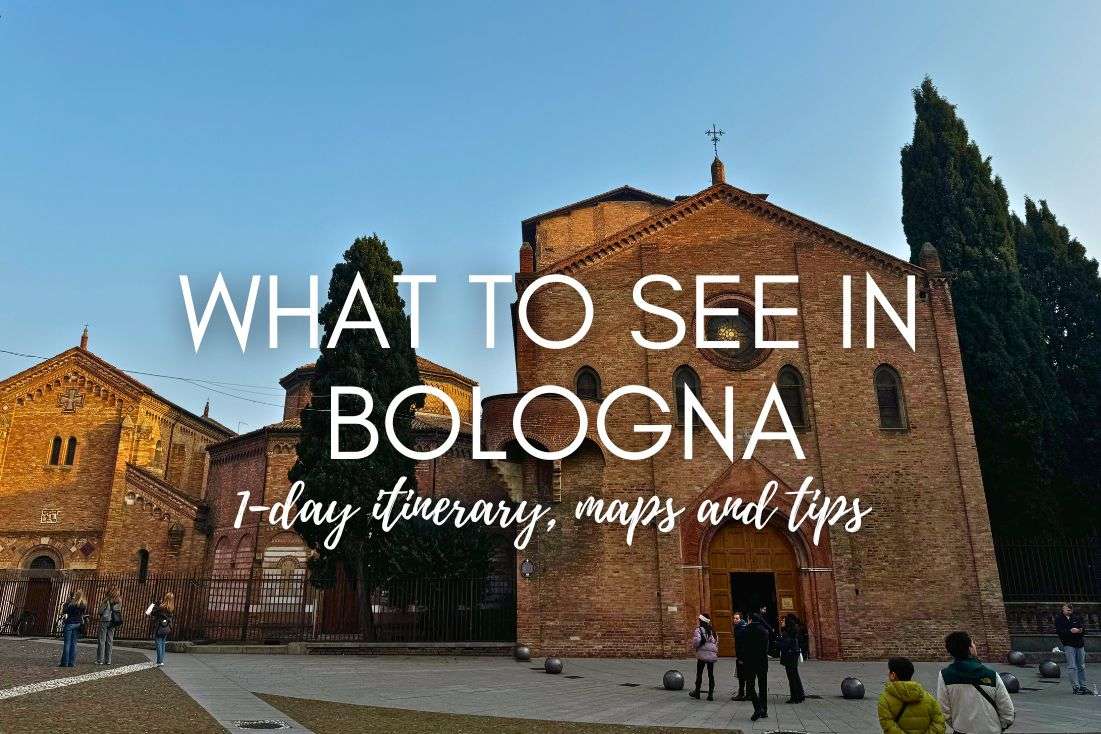
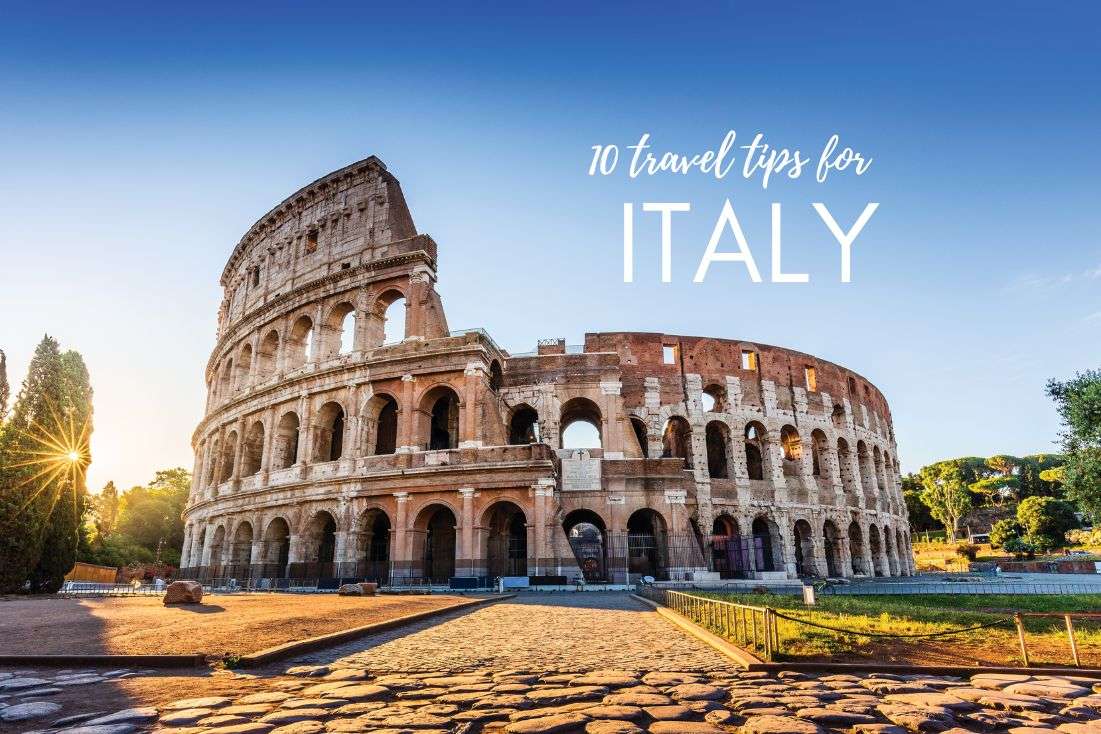



Comments | Thoughts? Give us a shout!